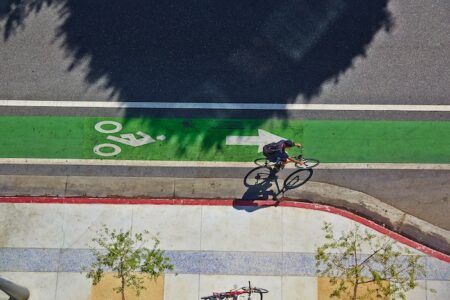The search for an available parking space in downtown areas and parking garages is a tedious and time-consuming daily chore for drivers worldwide, which could soon be alleviated due to new technology that is due to be unveiled at an international ConnectedWorld conference taking place in Berlin on February 17-18. Bosch has developed systems to create real-time maps of available parking spaces with the help of wireless sensors installed on the pavement. The sensors recognize whether a parking space is occupied or not, and share the information via the internet. In the future, even cars passing by available parking spaces will be capable of reporting them. The ultrasonic sensors installed in many modern cars to support their parking assistance functions identify gaps along the side of the road. Since many vehicles are now connected online, the information can also be transmitted over the internet and displayed on a real-time map. Transmitting the real-time information to users’ smartphones, or directly to their cars’ navigation devices, can help shorten the search for parking spaces.
The wireless sensors installed on the pavement are built into stable, semicircular plastic housing similar to the type often used to mark lanes on roads. The wireless sensor is capable of recognizing whether a car is parked over it, and a tiny, energy-saving radio transmitter in the sensor reports this information to a receiver, similar to a home WiFi router, which is capable of gathering data from hundreds of sensors. Developed as part of Bosch’s MEMS (Micro-Electro-Mechanical Systems) research program, the new sensors can remain in place for several years, doing away with the time and expense needed to change batteries or sensor units. The power supply lasts for such a long time because the sensors require extremely little power for data transmission and feature an advanced energy management system, eliminating the need for elaborate and failure-prone cabling.
“The status information is transmitted over the internet to a database, where a software program creates a parking map of the respective area practically in real-time,” explained Dr Rolf Nicodemus, head of the connected parking project at Bosch. “Depending on the application, we could be talking about a level of a parking garage, a street, or an entire downtown area. Many cars already feature a parking assistance function, which means they are often also equipped with our ultrasonic sensors. As the vehicle drives past, these sensors identify spaces between the cars parked along the side of a road. Because more and more cars are also online, this information can be transmitted to a database at a high speed. The more cars participate in this system, the more detailed and up-to-date the map.”




